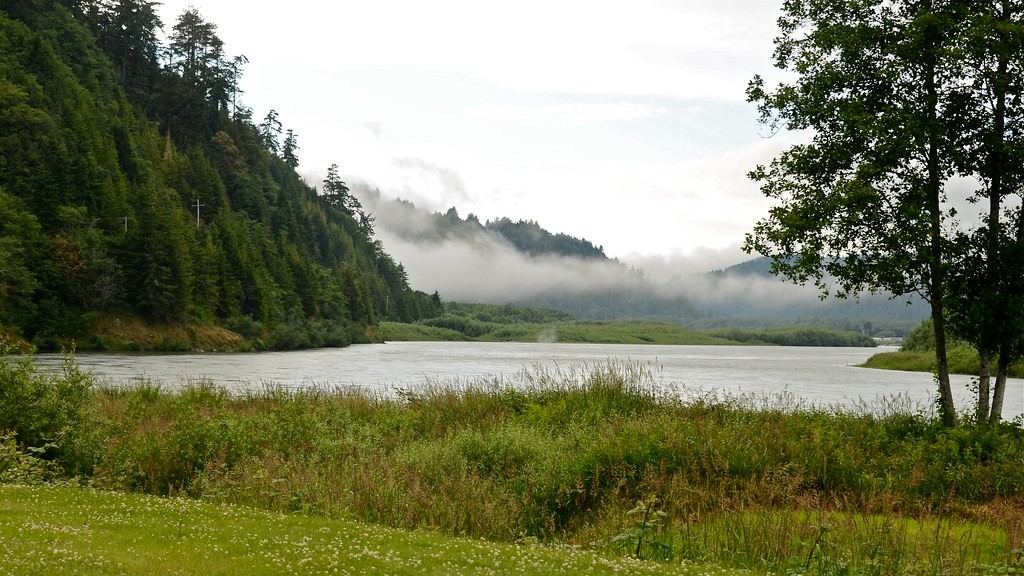Importance of Nile River
The Nile River is one of the most important sources of freshwater in the world, played an important role in the history of Ancient Egypt and the development of modern civilization. It is the longest river in the world, stretching over 4,000 miles from the highlands of Ethiopia and Uganda in the south to the Mediterranean Sea in the north.
It has been a major transportation artery in Africa, linking the ancient African kingdoms of Sudan and Egypt. It has enabled agricultural production that has nourished the people of the region for thousands of years. The Nile River is considered the lifeblood of Egypt and is the main source of water for irrigation and drinking water. It is also an important source of hydroelectric power and contributes to the growth of industries.
The physical geography of the Nile is divided into two parts – the upper and lower Nile. The upper Nile, which flows through Sudan, is the longer and more important part of the river. It is fed by its two major tributaries – the Blue Nile, which originates in Ethiopia, and the White Nile, which flows from Lake Victoria in Tanzania. The two tributaries join at Khartoum in Sudan and form the single Nile.
The lower Nile, which flows through Egypt, is the shorter and less important part of the river. It is formed when the two tributaries of the upper Nile flow into Lake Nasser. The lower Nile is approximately 830 miles long and is primarily used to irrigate the Nile Delta, an area in lower Egypt that receives the Nile’s water.
The Nile River is an iconic example of how nature adapts to the changing environment and provides new opportunities for life to thrive. Its long history and its ability to shape the culture and the civilization of the region make it an important part of our world. The river is a powerful force that can be harnessed and used to create a better future for everyone in the region.
The flow of the river has been managed by humans for centuries. One of the most important techniques used is the Aswan Dam, built in the 1960s, which controls the flow of the river and prevents floods, allowing for better irrigation and navigation of the river.
The Aswan Dam serves multiple purposes, from providing hydropower to creating a reservoir which stores water and can be released during times of drought, providing a buffer against the extreme conditions of the Sahara desert. It has also provided a way to store and transport water to the population in the region, allowing them to grow crops and livestock.
Contribution to Nile Ecosystem
The Nile is an incredibly important ecosystem and provides an invaluable habitat for many species of fish, birds, and plants, some of which are rare and endangered. The wetlands along the Nile are home to some of the most diverse and biodiverse wildlife in the world and serve as an important refuge for endangered species, such as the Nile crocodile, the African Wild Dog, and the Pygmy Hippopotamus.
The wetland ecosystems of the Nile provide essential services, such as flood control and water purification, which are important for the health and sustainability of the whole ecosystem. They also provide habitat for migratory birds and are important for the local people and the economies of the region.
The Nile River is also an important source of tourism and replenishes the soil of the surrounding area with the nutrient-rich silt it deposits. These sediments are important for agricultural production and provide food and livelihoods. In Egypt, the Nile River has helped form one of the cultural and spiritual centers of the world, providing spiritual sustenance and a powerful connection to the ancient past.
The importance of the Nile River to life in Egypt and in the Nile Valley cannot be overstated. It is a life-giving force, providing food, water, energy, and ecosystem services to millions of people in the region. Its importance to the region is timeless, and the way it has shaped our world is something that will not be forgotten.
Effects of Human Activity on Flow of Nile
Human activity has had a profound effect on the flow of the Nile River. Climate change, deforestation and human population growth has all caused changes in the way the river flows and have had a significant impact on the ecosystem of the river.
Deforestation along the river has caused sedimentation in the river, making it more shallow and reducing its flow rate. This has led to reduced water supplies and has had a negative effect on the wildlife in the river. Climate change has also had an effect, with the reduced flow of the river resulting in less water in the river and the increased evaporation resulting in higher salinity levels in the water.
The increased population in the region has also had an impact, with more people using the river for drinking water and agricultural needs. This has caused an increase in pollution in the river and has had a significant effect on the overall health of the river. Pollution has resulted in the death of many species, including fish and other aquatic life, which are essential for the health of the ecosystem.
The human impact on the river also has a long-term effect. The reduction in flow rate, sedimentation and pollution all have a detrimental effect on the overall health of the river and its biodiversity, with the decreased flow and increased salinity leading to a decrease in the number of species and variety of habitats.
In order to counteract the effects of human activity, there has been a concerted effort to improve the health of the river and to restore its natural flow. This has been done by restoring wetlands, controlling river flow and introducing management strategies that reduce pollution and reduce the human impact.
Nile Dam Controversy
The building of the dam has not been without controversy, however. In particular, the building of the Grand Ethiopian Renaissance Dam has caused concern, as it affects the flow of the river and could greatly reduce the amount of water flowing downstream into Egypt and Sudan.
The building of the dam has sparked heated debates between Ethiopia, Egypt and Sudan, and has also sparked concerns in western countries, such as the United States, who have a vested interest in the stability of the region. The dam has also caused controversy regarding the environmental impact, with some experts arguing that the dam will lead to a decrease in biodiversity.
The controversy surrounding the dam has highlighted the importance of the Nile, and how the decisions made by a few countries can have a dramatic effect on the region as a whole. It shows how the fragile ecosystem of the river can be disrupted by human activity, and how vital it is for all the countries involved to work together to manage the river in a sustainable way.
Impact of Water Scarcity on Nile
Water scarcity has become a growing problem in the region and is a major threat to the health and stability of the Nile River. Climate change has caused droughts and a decrease in rainfall, which has led to decreased river flows and a lowering of the water table. This has led to reduced agricultural production and a decrease in the quality of life for people living in the region.
The scarcity of water also has a major effect on the biodiversity of the river and its ecosystem. Decreases in the river flow have led to increases in salinity, decreased oxygen levels, and an overall decrease in the number of species and variety of habitats.
The situation could get worse in the future and the river is facing an uncertain future. How to ensure the sustainability of the river and the people who live on it is an urgent problem that needs to be addressed. Climate change could lead to even greater declines in the flow of the river, leading to more drastic measures having to be taken to ensure the river’s survival.
Future of the Nile
The future of the Nile River will be determined by the actions taken by the countries of the region and by the international community. The river has been managed for centuries and is an integral part of the region’s society, economy and culture. How the river is managed in the future will have a huge impact on the people and wildlife of the region.
The Nile River has a rich history and is an iconic symbol of Africa and of the world. It is the lifeblood of the region and its future is of vital importance to the people of the region and to the world as a whole. It is essential that the river is managed in a sustainable way, to ensure that it remains a source of life and sustenance for generations to come.
Conclusion
The Nile River is one of the most important sources of freshwater in the world, with a long and storied history. Its importance to the region is timeless and it is essential that the river is managed in a sustainable way, to ensure that it remains a source of life and sustenance for generations to come. The decisions made about the river will have a profound effect on the environment, the people and the wildlife of the region, and it is essential that these decisions are made with the best interests of the people in mind. The future of the river is in our hands.



